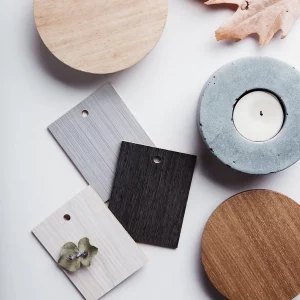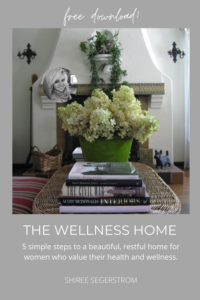3 Ways to Work with an Interior Designer: a Getting Started Guide
joy of nesting
3 Ways to Work with an Interior Designer: a Getting Started Guide
An interior designer is a trained professional who combines their ‘innate’ creativity with ‘learned’, practical skills to create functional, beautiful spaces. Here are 3 ways to work with an interior designer and a ‘getting started guide’.

Why Work with an Interior Designer
When you work with a designer, you’re not just paying for their ability to visualize and improve your spaces. Many of them can save you money too, especially if you know how to utilize their services going in.
- They can help you avoid replacing items that don’t need to be replaced.
- Can keep you from choosing the wrong thing, especially crucial when choosing flooring, sofas, window treatments and other big-ticket items.
- Can create an overall design scheme, that flows well from room to room.
- Make choices that don’t make your old stuff look older!
- Can blend your existing furnishings with new things to make a really, individual look: one that won’t date quickly, or that you’ll tire of.
- Can design remodels and additions that look current while blending them to go with the existing, older architecture.
How to Better Utilize an Interior Designer
There are three main ways to work with an interior designer. To maximize the benefits, start out with a Discovery Call and decide which of the three suits your needs.
Complimentary Discovery Call
A Discovery Call is a short, introductory phone or Zoom convo that allows you and the designer to talk about your problems or challenges.
During this call, you can:
- Share why your current space isn’t working.
- Share your ‘scope of work’ aka the size of project you prefer.
- Discuss timelines.
- Discuss budgets, if you’re comfortable doing so. During the call the designer can help you with realistic costs.
- Discuss whether to proceed with virtual design sessions or in person services, aka Full-Service Design.
This isn’t generally the time and place to get your problems solved or questions answered, although with me, I will answer simple questions on the discovery call.
About Virtual Design Sessions
The first way to work with a designer is in a virtual design session. These are held via Zoom and can range from one to three hours.
During these sessions you might discuss specific design challenges, color schemes, furniture placement or even receive budget friendly design advice. They generally consist of you first submitting pictures, measurements and a prepared, detailed questionnaire.
These are followed by your actual session where the designer presents to you his or her ideas and you review and ‘tweak’ them together.
Virtual Design Pre-Work
- You fill out a detailed questionnaire.
- You take measurements and pictures (in my sessions I give you instructions on how to do these).
- Submit your pre-work and schedule your virtual session.
Getting the Most Out of Virtual Sessions
- If you have a style in mind, clearly articulate it in your questionnaire prior to your session.
- Make sure your session will be recorded.
- Make sure you get a follow up written report with resources, ordering info and product descriptions.
- Ask for a summary of action steps.
Pros and Cons of Virtual Design
There are pros and cons to both virtual design sessions. The trick to getting the most from your designer is in knowing which one is best for you.
Pros
- Great dollar value and clear, set price tag.
- A quick way to see if you like working with a designer.
- Potential results range from good to amazing.
- Keeps you from buying the wrong things.
- Saves you from replacing things that don’t need to be replaced.
Cons
- Requires you doing the legwork.
- Requires you doing the shopping.
- Requires you overseeing the project.
Consultation Only
The second way to work with a designer is consultation-only. Consultation only offers clients professional guidance and expertise with you, the client doing the buying and overseeing the project yourself.
Typically, consultation only involves two to three meetings with the designer to address specific design challenges, provide creative solutions, and receive a personalized ‘design presentation’ tailored to the client’s needs and style preferences.
With consultation only, the designer assesses the space, discusses the client’s goals and vision, provides advice on layout, furniture arrangement, color schemes, decor choices, and other suggestions for maximizing functionality and aesthetics.
Consultation-only services are ideal for clients who prefer a hands-on approach to their design projects or who are working within a limited budget and timeframe.
Pros and Cons of Consultation-Only Design
Pros
- Cost-Effective- Consultation-only services are often more affordable than full-service interior design packages, making them accessible to clients with smaller budgets.
- Flexibility- Clients have the flexibility to choose when and how often they need design advice, allowing them to work at their own pace and prioritize areas of their home that require attention.
- DIY Empowerment- By receiving expert guidance and recommendations during the consultation, clients gain valuable insights and skills to implement design changes themselves, fostering a sense of empowerment and creativity.
Cons
- Limited Scope- Consultation-only services focus on providing advice and recommendations rather than full-scale design projects, which may not fill all of the client’s needs.
- Execution Challenges- Clients may encounter difficulties placing orders, taking deliveries and overseeing installations without help, especially if they lack the time and expertise.
- Potential for Discrepancies- Without ongoing oversight from a designer, there’s a definite risk that the final outcome may not meet the client’s expectations. Tracking and troubleshooting orders and installations is the hardest part of the designer’s job.
About In Person, or Full-Service Interior Design
Full service interior design is the most comprehensive option. It involves the designer managing your project from the initial concept through to the final installation.
This service often includes space planning, material and finish selections, procurement of furniture and fixtures, project management and coordination with contractors and artisans.
Benefits of Full-Service Design
- Cohesive design- a professional with experience ensures well-thought-out spaces.
- Time-saving- the designer handles the details, allowing you to focus on other priorities.
- Access to resources- experienced designers usually have access to trade-only furnishings and materials.
By understanding these stages and preparing accordingly, you can ensure a successful collaboration with your interior designer that meets your expectations and elevates your space. Remember to communicate openly and trust the expertise of your designer to guide you through the process.
Self-Employed Designers vs. Showroom Designers
When deciding to hire a designer, you may encounter two main types: self-employed designers and showroom designers. Understanding the differences between these two can help you make an informed decision that aligns with your project needs and expectations.
Self-Employed Interior Designers
Self-employed interior designers run their own business. They have the freedom to choose their projects and clients, set their schedules, and create designs that truly represent their style.
These designers often have a more personal stake in your project’s success, as their business reputation is directly linked to client satisfaction. They may offer a more tailored service and can be flexible with their design solutions and pricing.
Pros
- Personalized attention to your project
- Flexibility in design and scheduling
- Direct communication and feedback
Cons
- Potentially higher costs due to individualized service
- Recommendations may influence sales targets.
Showroom Designers
Showroom designers, on the other hand, are often employed by retail stores and focus on selling products from their showroom floor.
They may work on a commission basis, which can influence their recommendations. While they can offer professional design advice and have access to a variety of products, their primary goal is to drive sales for their employer.
Pros
- Access to a wide range of products and brands
- May offer discounts on showroom items.
- Convenient one-stop shopping experience.
Cons
- Recommendations may be influenced by sales targets.
- Less personalized service compared to self-employed designers.
Making the Right Choice for Your Home
The choice between a self-employed interior designer and a showroom designer depends on your project scope, budget, and personal preferences.
If you value a custom, personalized experience and direct designer-client interaction, a self-employed designer may be a better fit. However, if you’re looking for a more straightforward approach, a showroom designer is a practical choice.
Remember, the key to a successful design project lies in clear communication and an understanding of goals and expectations. Whichever type of designer you choose, ensure they align with your vision and are committed to bringing function and beauty to your home!
Download Your Free Gift
To get started on a home where you feel healthy, happy and connected grab my complimentary design and wellness download, The Wellness Home.
It’s the prettiest little book. It’s a quick read with super easy design solutions that help you lead a beautiful, healthier lifestyle at home, plus my 3-to-5 Things Framework that gives you step by step actions to get started and stay on track.
That’s it for today. Thank you for stopping by!
Shiree’
What is Wellness Design? Learn more about the connection between your wellbeing and your home, featured on Deirdre Fitzpatrick’s Dying to Ask Podcast. And if you’d like to dive deeper into this topic, check out my blog post, “Hiring an Interior Designer”.

